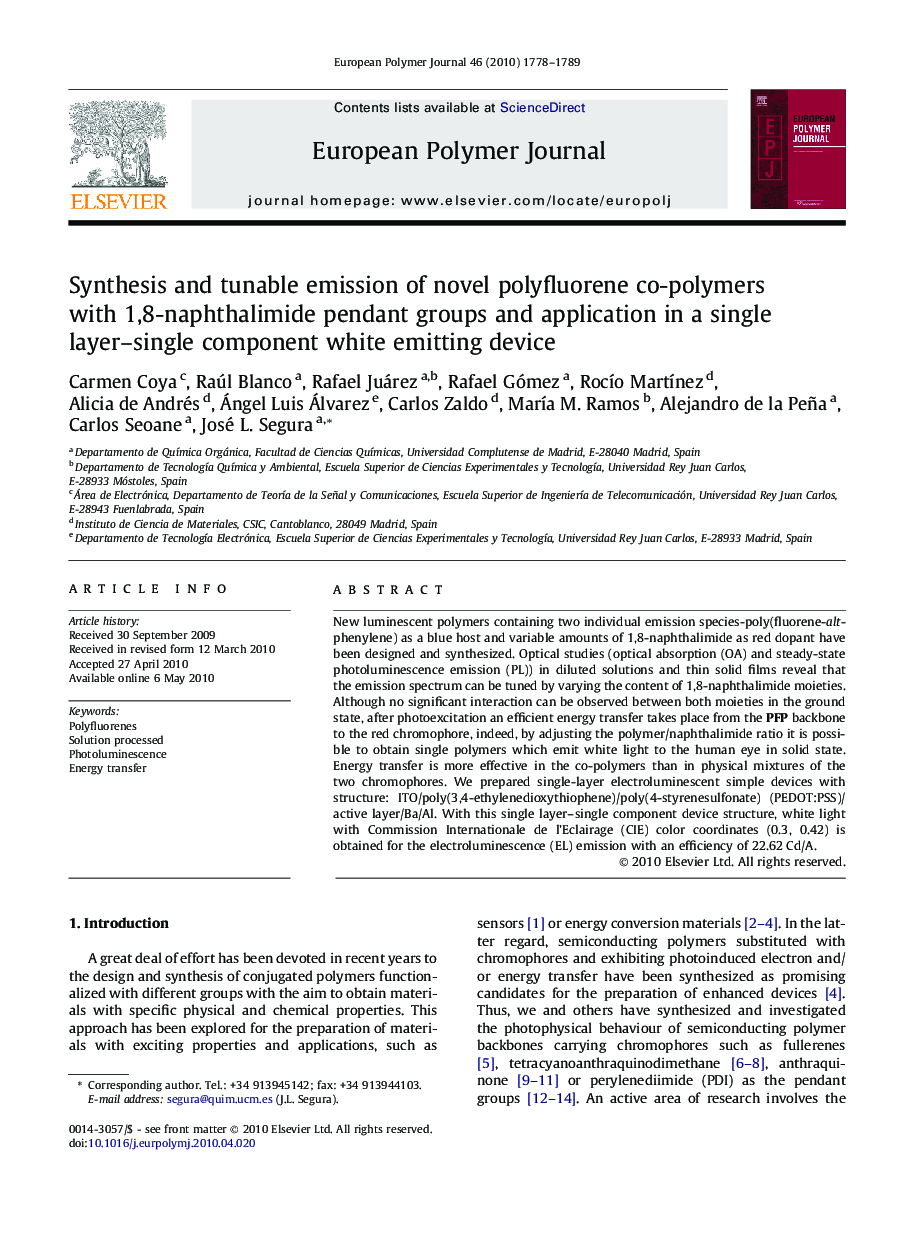| Article ID | Journal | Published Year | Pages | File Type |
|---|---|---|---|---|
| 1402223 | European Polymer Journal | 2010 | 12 Pages |
New luminescent polymers containing two individual emission species-poly(fluorene-alt-phenylene) as a blue host and variable amounts of 1,8-naphthalimide as red dopant have been designed and synthesized. Optical studies (optical absorption (OA) and steady-state photoluminescence emission (PL)) in diluted solutions and thin solid films reveal that the emission spectrum can be tuned by varying the content of 1,8-naphthalimide moieties. Although no significant interaction can be observed between both moieties in the ground state, after photoexcitation an efficient energy transfer takes place from the PFP backbone to the red chromophore, indeed, by adjusting the polymer/naphthalimide ratio it is possible to obtain single polymers which emit white light to the human eye in solid state. Energy transfer is more effective in the co-polymers than in physical mixtures of the two chromophores. We prepared single-layer electroluminescent simple devices with structure: ITO/poly(3,4-ethylenedioxythiophene)/poly(4-styrenesulfonate) (PEDOT:PSS)/active layer/Ba/Al. With this single layer–single component device structure, white light with Commission Internationale de l’Eclairage (CIE) color coordinates (0.3, 0.42) is obtained for the electroluminescence (EL) emission with an efficiency of 22.62 Cd/A.
Graphical abstractWhite light with Commission Internationale de l’Eclairage (CIE) colour coordinates (0.3;0.42) is obtained for the electroluminescence (EL) emission with an efficiency of 22.62 Cd/A with luminescent polymers containing two individual emission species-poly(fluorene-alt-phenylene) as a blue host and variable amounts of 1,8-naphthalimide as red dopant.Figure optionsDownload full-size imageDownload as PowerPoint slide
